When retargeting is used, customers are 70% more likely to convert. Up to 91% of marketers have found that retargeting is more effective than other marketing methods such as display ads, email, or search. And hence, integrating retargeting with your overall marketing strategy is a no-brainer.
In this guide to ad retargeting, you will learn about what retargeting is, how it works, and the different types of retargeting that can get you conversions. Let's get started!
Click here to download detailed infographic on types of ad retargeting.
What Is Ad Retargeting?
As a type of paid advertisement, retargeting is when you show ads to those who have previously visited your website or are already familiar with your brand on social media.
Let's say a user, after finding you on Google, lands on your website. They browse a few pages before leaving the website.
You can create ad campaigns that display ads to such users with retargeting. These ads will appear across different web properties to the user depending on the retargeting platform you decide to use.
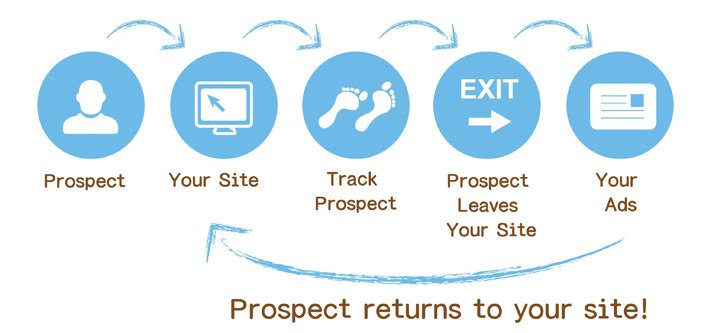
Image Source: Ad One
Retargeting tracks the visitors that come to your website and their actions.
Because of such detailed user journey tracking, you can create very specific ads campaigns to target a certain segment of your website visitors who performed a particular action on your website, such as cart abandonment or who viewed a certain page.
The goal of ad retargeting is to engage with those interested in your business and eventually bring them back to become a customer.
Some more benefits of running ads retargeting includes:
- More sales
- Improved ad performance
- Better brand awareness
- Faster buyer's journey
Remarketing Vs. Retargeting
You might have also heard the term remarketing before. So now, what's the difference between retargeting and remarketing?
Even though both terms are often used interchangeably, remarketing is a strategy to re-engage customers through social media, email marketing, and offline activities.
On the other hand, retargeting is a "tactic" or a segment of remarketing and is usually focused on paid text and display ads.
How Ad Retargeting Works?
1. Gather Data With A Retargeting Pixel
The advertising platform that has the ability to retarget users offers a way to collect user data by using a technology called a retargeting pixel.
A retargeting pixel is a one or two-line JavaScript code that you can place on your website pages, and that also helps the advertising platform recognize a user. Once the platform identifies a user, they store the user details in your account's retargeting list.
![]()
Image Source: Instablog
Does this sound confusing to you? Read the below example to understand how Facebook Pixel works:
You place a small JavaScript code on different pages of your website. These scripts get loaded every time someone visits your website. Then, these scripts connect with the Facebook servers. The Facebook servers recognize the user through IP addresses and cookies.
If the user who visited your website has a Facebook account and is also logged into Facebook at the time, then Facebook adds that user to your retargeting list. Later, you can retarget this user through Facebook ads. The more people visit your website, the bigger your retargeting list gets.
These visitors also include the people who visit your website from other ad platforms. This will allow you to retarget those users who have seen or clicked your ads through other ad platforms.
![]()
Image Source: Instablog
2. Target Your Customers With Your Customer List On The Platform
If you already have a list of your customers, you can upload a list of their email addresses to Facebook. Facebook will then try to match Facebook accounts with those email addresses to find those customers who are active on Facebook.
This is a great way to upsell and cross-sell your customers. By creating a retargeting list of people who have already bought your product or services, you can sell more to these same people.
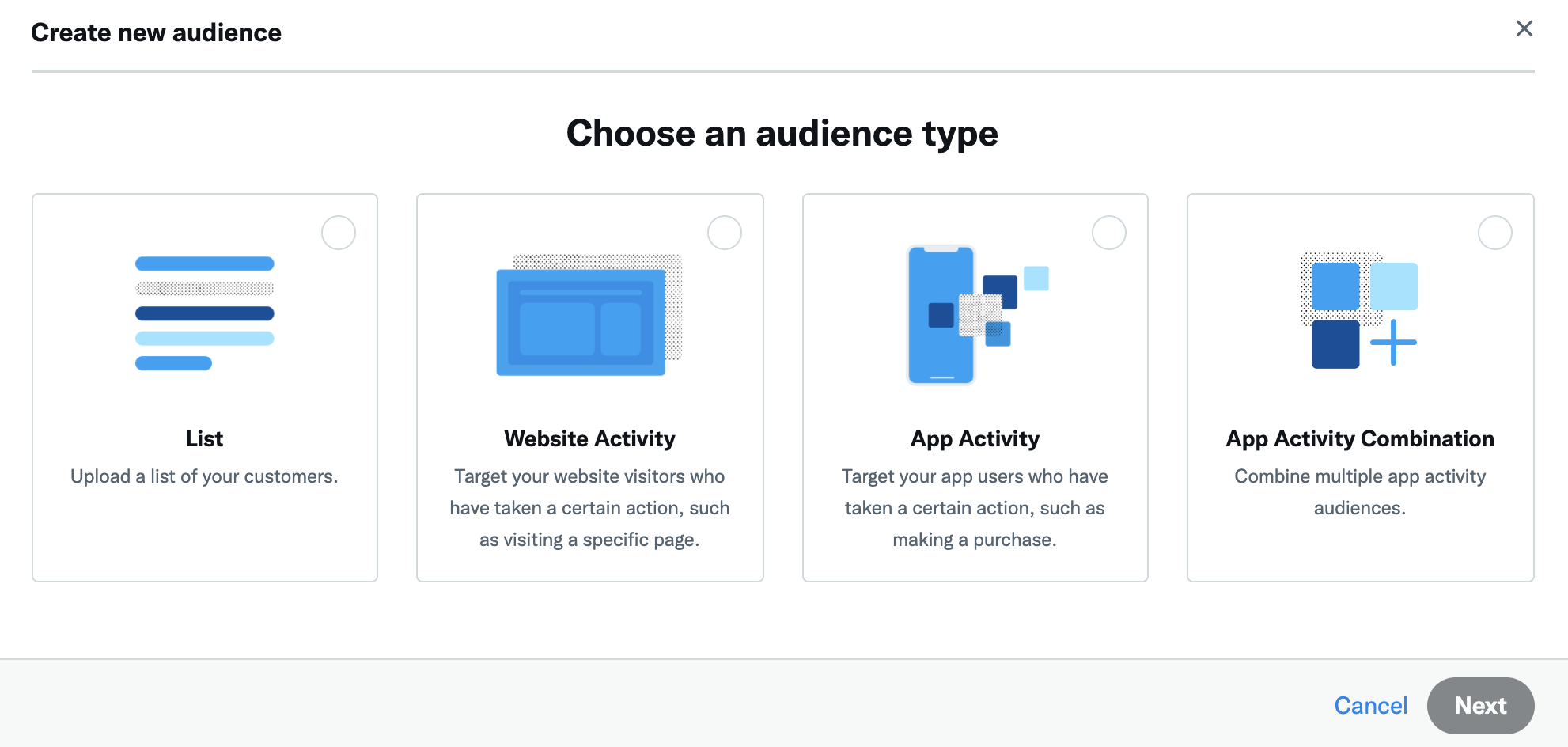
Image Source: Twitter
Once you have a list of people you want to retarget, you should start creating ads that can bring back such people to your website and complete the action they had left.
It's easier to sell more to the same people than find more leads and prospects and turn them into your customers.
You can promote more of your products or services to your existing customers with retargeting ads.
The 4 Types of Ad Retargeting
1. Website Retargeting
A strong website can make or break the online presence of your business. Before you think about retargeting people who landed on your website, take a look at your current website and ensure it is user-friendly.
A low-quality website will deter potential customers from finding the required information on your website. Even if you run retargeting ads, it would be quite difficult to fulfill your objective if your website is not user-friendly.

Image Source: Wishpond
Website retargeting is one form of online advertising. It is used to capture the potential customers who did not take predefined actions when they visited your website. Using this method, you can retarget those who previously visited your website with ads showing up on websites other than your own.
It is essential to have a proper retargeting strategy in place when retargeting these people. Retargeting everyone who visited your site with the same type of ad and messaging will not be effective.
You need to change the messaging of your website according to what the visitor wanted from your website but was not able to find on their first visit. This way, your retargeting campaign will have a much higher return than running a retargeting ad with a generic message. You can also consider grouping visitors together based on the specific page of your website they visited.

Image Source: Wishpond
2. Social Media Retargeting
Social media retargeting is somewhat similar to website retargeting. However, the retargeting ads shown to users are restricted to just social media platforms.
If someone is browsing a particular webpage on your website, leaves your website without completing the action, and then browses a social channel such as Facebook or Instagram, you can show them Facebook ads or Instagram ads with your retargeting message.
Facebook Ads Retargeting
Facebook Ads Retargeting is the process of enticing users who have already engaged with your brand. The users might have engaged with your brand either by interacting with your website, making a purchase, or interacting through your Facebook page.

Image Source: Claire Pelletreau
These are people who already know about your brand. Facebook Ads Retargeting is a powerful way to re-engage your prospects and attract them to the customer's path.
Facebook retargeting isn't just an intrusive way to attract your buyers and promote your products, but you also increase brand awareness. You can create a Facebook retargeting campaign by logging into your Facebook Ads Manager, where everything begins.
Instagram Ads Retargeting
You can turn online window shoppers into your customers through Instagram retargeting. Using retargeting ads, Instagram offers a great opportunity to engage with and convert your targeted audiences who have an idea concerning your products.
Instagram retargeting enables you to maximize the power of Instagram.
One reason why Instagram retargeting is so beneficial is that it helps you reach out to those who have already visited your website. The purpose of retargeting is to convert such leads using the visual nature of Instagram if they didn't complete the action on your website. If you successfully retarget them, you can make them complete the purchase process.

Image Source: Tinuiti
You can even choose to retarget those who clicked on your ads or took part in your email marketing database through tailor-made ads and messages. Instagram retargeting acts as a reminder to elicit more sales from several incomplete leads.
LinkedIn Ads Retargeting
LinkedIn retargeting targets specific LinkedIn users who have visited your website, video ad, or company page. LinkedIn retargeting is an excellent way to reach your target audience and increase your website traffic and leads.
You may target your LinkedIn ads to people who have visited a page on your website, opened or completed a lead generation form, watched a video ad, RSVPed for an event on LinkedIn using Matched Audiences, or engaged with your company page.
LinkedIn retargeting can also be an extremely effective way to reach out to those potential customers who may not even know about your company or product.
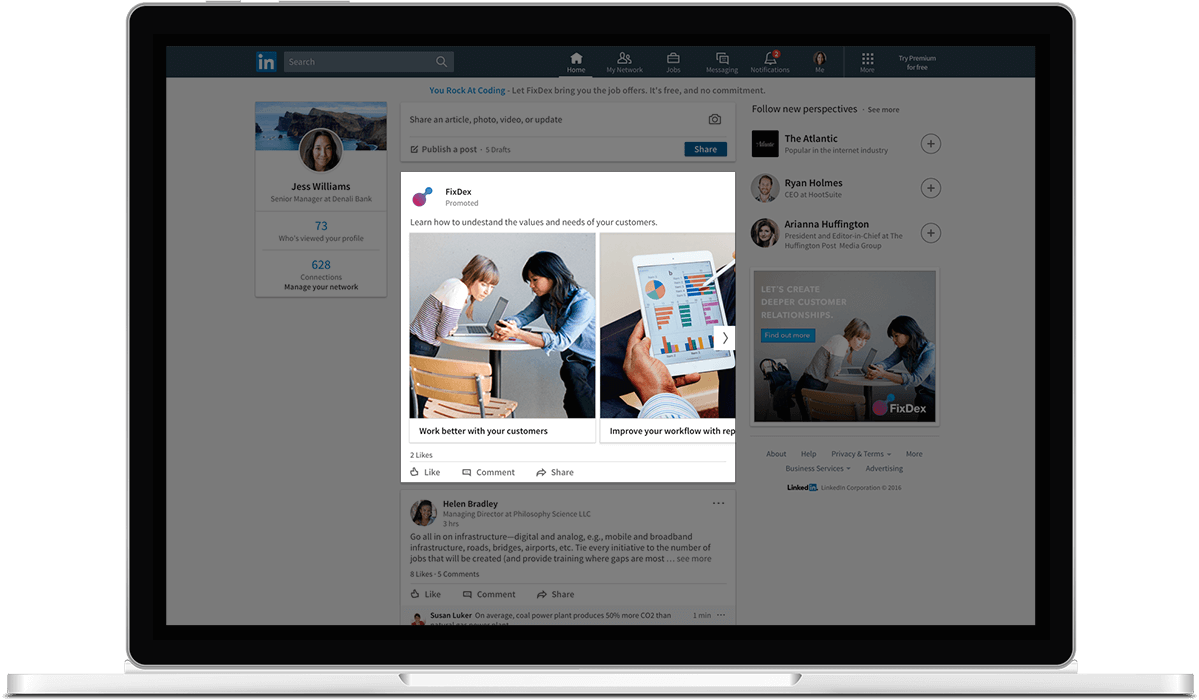
Image Source: LinkedIn
LinkedIn can even help you refine your marketing campaign by increasing or decreasing the frequency of targeting customers depending on how they interact with the platform. LinkedIn retargeting ads must perform well for you. This is where LinkedIn's enhanced targeting methods can help you a lot to succeed in your retargeting campaign.
Twitter Ads Retargeting
Twitter's retargeting seems fairly straightforward. It allows advertisers to target users who have visited their website or subscribed to their email newsletter. Marketers can serve promoted tweets to specific users on their Twitter stream through the use of anonymized email addresses and cookies.
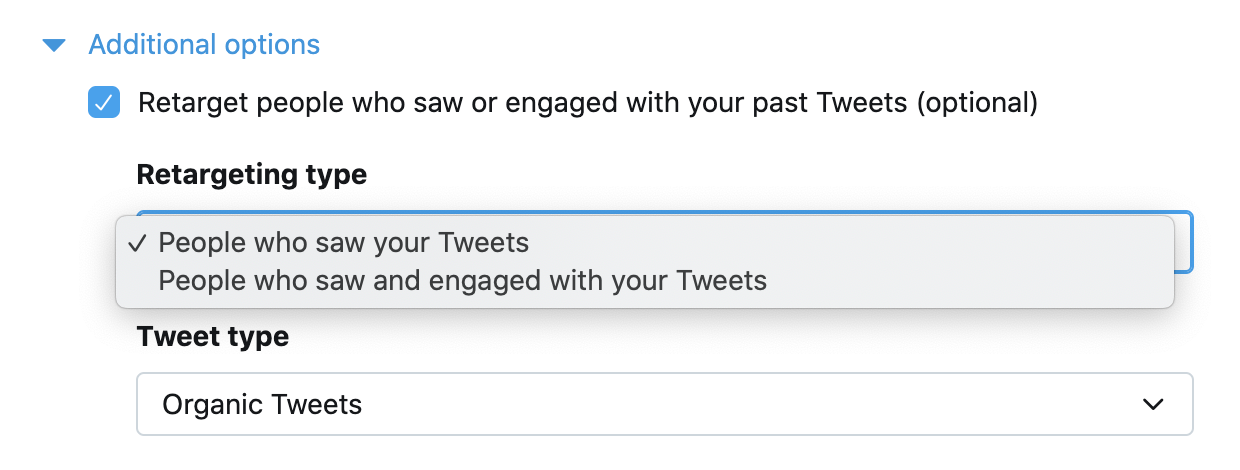
The user's email addresses that exist in a company's CRM database should match with the user's email address registered to their Twitter accounts. Here are some ways you can retarget customers on Twitter:
- Target past website visitors
- Target people who have engaged with your tweets
- Target almost-there shoppers
- Target newsletter recipients
YouTube Ads Retargeting
In the evolution of retargeting, using YouTube videos is the next step. As Google continues to try and make searching a more visual and interactive experience, the prime to fulfill this void is video ads. Retargeting with YouTube videos allows you to:
- Grab your customer's attention and explain to them why your product is beneficial.
- Step outside of the character limit of conventional text ads. Push beyond the dull and static nature of image ads.
- Connect directly with your customers by explaining or demonstrating your product and service in a 30-second clip.
By combining video ads on YouTube with your retargeting campaign, you will be able to reach highly qualified leads and potential customers.
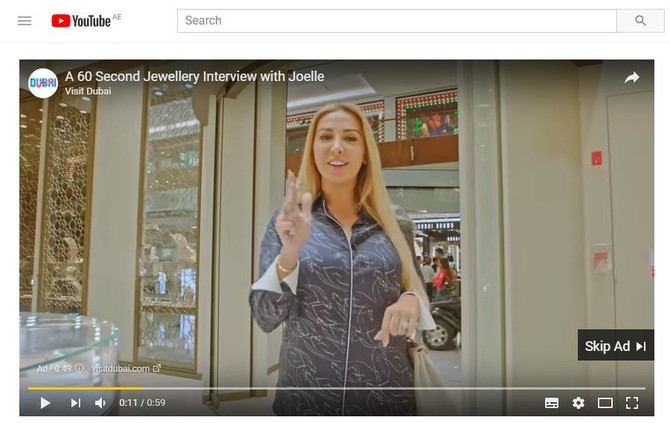
Image Source: Arab News
Pinterest Ads Retargeting
Pinterest retargeting allows you to retarget Pinterest users who have previously engaged with your products on your website.
While you are creating the Pinterest Shopping Ads campaign, you can select Dynamic Retargeting in your Ad Group settings.
Common strategies for Pinterest Retargeting are:
- Retarget people who abandoned a product in the cart without completing the purchase.
- Retarget people who searched for a product on your website and did not add it to their cart.
- Cross-sell users who completed a purchase on your website as they might be interested in other similar products on your website.
- Up-sell users who purchased products on your website and who might also need additional accessories or upgrades.
You can easily achieve these objectives through a strategic audience definition and product group structure.

Image Source: WebFX
3. Mobile App Retargeting
Retaining valuable users and engagement is the key to a successful app when it comes to mobile apps. So how can you improve these metrics? One of the simplest ways is through retargeting.
Retargeting campaigns will allow you to bring back those users who have installed your app but have stopped interacting with it over a certain period of time. You can also get back the users who have visited your app's landing page but have not downloaded the app.
Instead of spending money on a new user who might not convert, you can use ads more effectively to retarget potential customers that visited your app landing page and display ads to reactivate lapsed users.
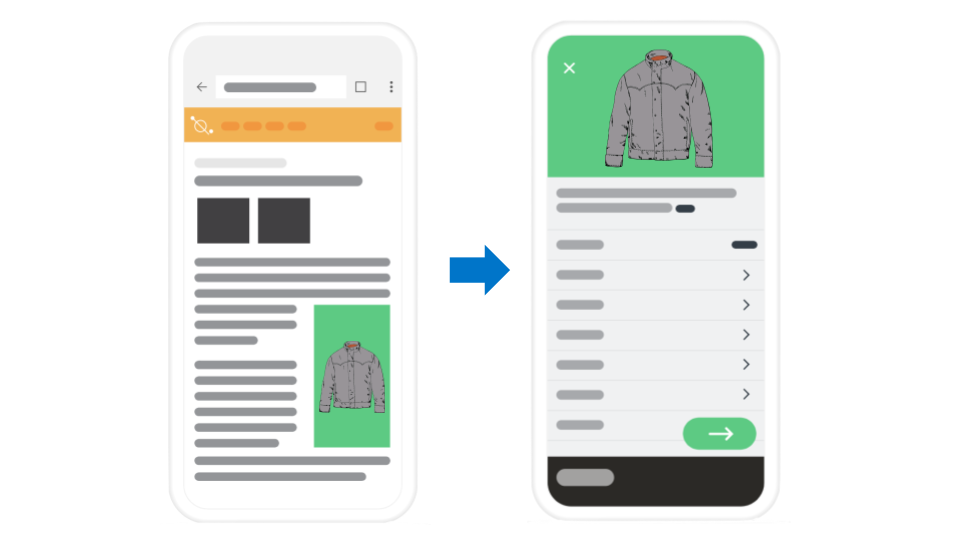
Image Source: Branch Blog
4. Search Retargeting
Search retargeting shows ads to a user as they browse the internet based on the keywords they have entered in search engines. You need to choose specific keywords related to your business when setting up a search retargeting campaign.
This type of ad retargeting is very successful because it uses intent to connect with users. Sometimes the user may not know about your business, but they are searching for something specific that your business provides. It becomes easy to target such users using particular keywords.
The pricing of search retargeting ads is not dependent on keyword competition. This makes it a profitable solution for advertisers using highly competitive keywords.
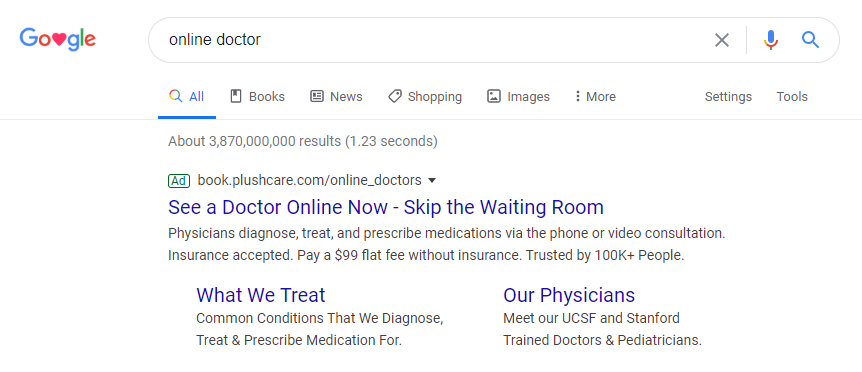
Image Source: Instapage
Where can you do search retargeting at? Google search and display using Adwords are a great way to go about with this type of ad retargeting.
Google serves billions of search results every day. And you can display your ads on top of these organic search results.
AdWords allows you to display ads on millions of third-party websites that are a part of their network.
You can retarget your prospects, visitors, and existing customers around the web with Google AdWords. Most websites, getting millions of visitors, are a part of Google's advertising network. You can easily target people who visit these websites using search retargeting ads.
Even if your target market does not use social channels such as Facebook, you can target them on websites they visit regularly.
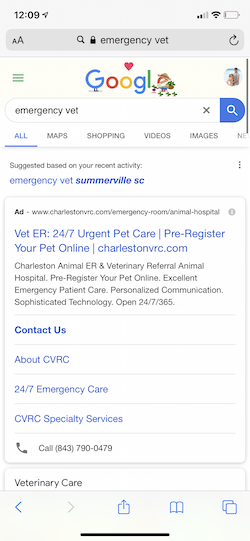
Image Source: Instapage
You can also retarget those customers who searched for your competitors after visiting your website.
Reportedly, the Google Ad network can reach over 90% of Internet users worldwide. That covers almost all Internet users.
Use Google Ad Network if you want to retarget your website visitors or customers across the web rather than on one single platform.
How to Get Started With Ad Retargeting?
Step 1: Create a retargeting strategy
You need to determine your goals for retargeting to create an effective retargeting strategy. Some of the goals you can set for your ad retargeting campaigns are:
- Growing awareness
- Nurturing leads
- Increasing conversion and sales
- Bringing back previous customers
- Reducing cart abandonment
Step 2: Choose your retargeting platforms
You need to choose where you would want to display your retargeting message to your customers.
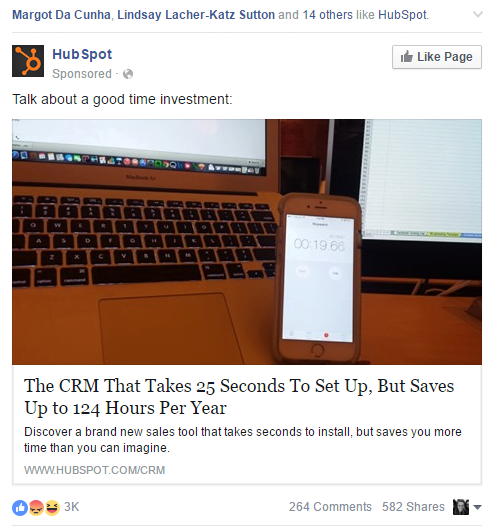
Image Source: WordStream
Step 3: Add tracking to your site
You will need to install a tracking code on the retargeting platforms in order for your retargeting marketing strategy to work. This will allow the retargeting platform to track your web visitors' actions.
Step 4: Create your retargeting ads
Now you need to create your retargeting ads. Retargeting ads are categorized into one of two types:
1. Static Retargeting Ads – They function like traditional online ads. You need to design a creative. The same ad is shown to everyone you are targeting in the campaign.
2. Dynamic Retargeting Ads – They automatically generate ad creatives to show to each individual user. Because of this, each user receives a unique ad.
Wrapping Up
Retargeting is an effective way to convert prospects or leads into customers. Marketers can nudge prospects down the marketing funnel by considering engagement and knowledge levels with more compelling content and highly targeted offers.
Looking for a social analytics tool to track the performance of your marketing campaign? Try Statusbrew. With several ready-to-use reporting templates and total flexibility to customize these reports, Statusbrew will help you determine whether your social initiatives have led to positive results and where adjustments are needed to strengthen your marketing campaigns - in no time.
Statusbrew is an all in one social media management tool that supports Facebook, Instagram, Twitter, Linkedin, YouTube, and even Google My Business.
Infographic

Citation Policy: Please feel free to use these infographics in any commercial or non-commercial capacity. If you use the infographics, we require a reference back to Statusbrew Blog.




Explore the Statusbrew range of social media tools
Cancel anytime!